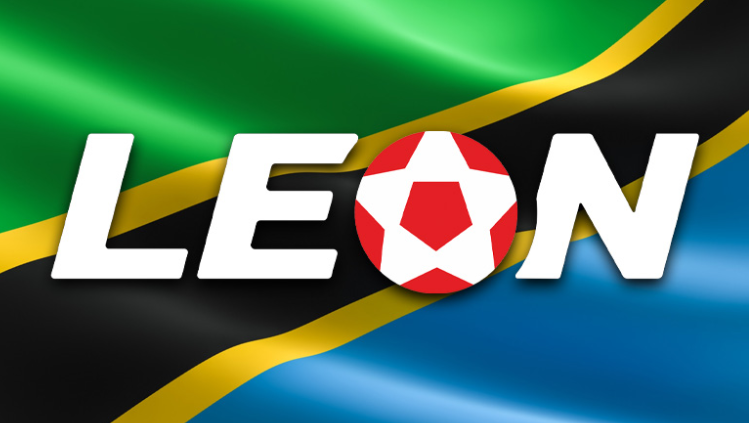
Analytical Overview of Big Odds Predictions and Betting Trends in Tanzania

In the context of sports analysis, the term big odds refers to higher-than-average betting coefficients that indicate a lower probability of an event occurring. While these outcomes are less likely statistically, they attract attention because they offer proportionally greater returns when correct. From a mathematical standpoint, big odds are derived from data models that evaluate historical performance, form, team statistics, and contextual variables such as match conditions or player availability.
High odds often reflect market uncertainty or unique circumstances that deviate from expected outcomes. For instance, underdog victories, rare scorelines, or unexpected in-game events frequently fall into this category. Sports analysts assess these probabilities using statistical tools and computational models that simulate thousands of potential outcomes before determining the odds. The goal of this process is to quantify uncertainty rather than eliminate it.
The Analytical Framework Behind “Big Odds Sure Win Today”
The expression big odds sure win today often circulates among fans and bettors, yet in analytical terms, there is no such thing as a guaranteed outcome. Instead, this phrase refers to data-driven insights or calculated probabilities derived from current form and contextual analysis. Analysts use real-time data streams — such as player injuries, team rotations, and previous match outcomes — to estimate relative chances.
Professional modeling teams often work with probabilities expressed as percentages rather than fixed predictions. For example, a football team might have a 70% likelihood of scoring in both halves, or a tennis player may show a 65% success rate on break points. Translating these probabilities into big odds involves inverting the data to show the potential payout value against risk.
LEONBet Tanzania, among other analytical platforms, integrates such data visualization tools, allowing users to observe real-time updates and coefficients. While the focus is not on promotion, this provides a relevant case for how technology structures information for analytical observation rather than pure speculation.
Evaluating “5 Big Odds Today Sure Wins” in Data Context
The concept of 5 big odds today typically involves combining multiple high-odds events into a single analysis or model. Statistically, each outcome carries a certain degree of uncertainty, and the combined probability of success decreases as more events are added. However, evaluating these accumulations can be useful from a research and forecasting perspective.
Analysts approach these groupings by using models that simulate thousands of permutations. This allows for a more accurate understanding of how multiple independent variables interact. In Tanzania, where sports betting has grown alongside digital platforms, data aggregation is becoming increasingly sophisticated. Predictive algorithms can now process historical and real-time data, making it easier to identify patterns without implying certainty.
Such models highlight how modern sports forecasting relies more on statistical discipline than intuition. The phrase 5 big odds today sure wins can thus be understood not as a guarantee, but as an analytical exercise in probability optimization.
Role of Technology and Data in High Odds Prediction
The application of technology has transformed how analysts interpret high odds prediction. Machine learning algorithms and data analytics tools are now standard in modeling outcomes for sports such as football, basketball, and tennis. These technologies compile information from historical performance databases, player metrics, weather data, and in-game statistics to refine probability estimates.
Artificial intelligence models can process millions of data points to adjust odds dynamically, reflecting real-world developments like lineup changes or tactical shifts. In Tanzania, where mobile platforms play a significant role in data access, these technologies enhance the visibility and transparency of sports analytics.
Platforms like Leon Bet demonstrate how technological infrastructure supports analytical modeling through data accuracy and dynamic updates. The integration of structured datasets allows users to interpret changes objectively, making technology a vital component of modern odds analysis.
Leon Bet as a Case Example of Analytical Betting Platforms
Leon Bet serves as a relevant example of how structured sports data is applied within a regulated digital environment. The platform provides an interface where analytical frameworks, historical records, and live odds interact seamlessly. This integration illustrates how digital betting systems have evolved from static lists of events to data-driven environments.
While not all markets operate identically, the inclusion of analytical tools in Leon Bet’s infrastructure highlights a broader industry shift toward transparency. The platform uses algorithms to calculate live updates, manage large volumes of data, and reflect probability-based insights in real time. This approach aligns with the analytical trends observed across the Tanzanian sports ecosystem.
By examining platforms such as Leon Bet, one can observe how analytical frameworks support informed observation, data comparison, and structured understanding of high odds rather than promotional or speculative behavior.
High Odds and Risk Management in Sports Tanzania
The Tanzanian sports ecosystem presents a distinctive model in which football, athletics, and regional competitions attract analytical attention. The rise of sports Tanzania as a local search term reflects this growing interest. Within this market, big odds and high odds serve as valuable research categories for sports analysts, rather than mere betting concepts.
Analysts in the region often evaluate matches involving domestic clubs or the Tanzania national football team, integrating localized data sources and contextual knowledge. The development of online platforms, coupled with increased internet penetration, has improved access to data visualization tools. This has contributed to a gradual improvement in the accuracy of statistical assessments within the region.
Factors Influencing Big Odds Win in Modern Betting Models
Several factors contribute to the creation of a big odds win scenario. Statistical variables such as player fitness, team form, opponent strength, and situational dynamics play significant roles. In football, for instance, the absence of a key defender can significantly alter the expected goals metric, leading to adjustments in odds.
In the Tanzanian sports context, these variations are often tied to regional tournaments and environmental conditions. External elements such as weather, field quality, and travel fatigue can also affect performance metrics. The accumulation of these factors forms the backbone of advanced predictive models that define modern sports analytics.
Comparing Big Odds vs. Traditional Probability-Based Predictions
High odds predictions differ from standard probability-based models in that they involve greater volatility. While traditional forecasts prioritize consistency, high odds analysis focuses on identifying rare yet statistically possible outcomes. These events can provide deeper insights into team dynamics and systemic biases within data.
Sports analytics professionals often treat big odds models as research tools rather than decision-making mechanisms. Their primary purpose is to expand understanding of complex interactions in competitive environments. By comparing multiple datasets and simulations, analysts refine their interpretations of uncertainty rather than eliminate it.
Data Transparency and Analytical Integrity
Transparency is a core principle in modern sports data analysis. Analytical integrity ensures that forecasts are based on verifiable data and unbiased modeling. Platforms such as Leon Bet, through their data-driven interfaces, offer examples of how probability assessments can remain consistent and measurable.
Data transparency allows for public verification of metrics, which reinforces confidence in the analytical process. In Tanzania, where online engagement is increasing rapidly, ensuring the accuracy and traceability of data remains a vital component of analytical credibility.
Future Trends in Big Odds Analytics and Predictive Sports Modeling
Looking ahead, the application of artificial intelligence and predictive algorithms in big odds analytics is expected to expand. Future systems will likely integrate more advanced datasets, including biometric information and real-time tracking. In Tanzania, mobile technology will continue to play a major role in democratizing access to these analytical tools.
As the sports industry becomes increasingly data-oriented, platforms like Leon Bet are expected to remain relevant for their ability to synthesize complex data into accessible insights. The growing field of sports betting Tanzania analytics illustrates how the integration of local data with global technological advancements continues to refine predictive modeling and enhance the analytical understanding of sporting trends across the region.
The Analytical Perspective on High Odds Forecasting
Big odds prediction represents an intersection of mathematics, technology, and probability theory. It emphasizes the analytical rather than speculative nature of sports modeling. Tanzania’s emerging data infrastructure supports this evolution, providing greater transparency and depth to local sports analysis.
Leon Bet serves as a relevant case study of how structured data systems and analytical modeling coexist in a contemporary sports environment. As technology continues to evolve, the integration of transparent analytics, machine learning, and localized insights will likely remain central to the responsible and informed interpretation of high odds data.


